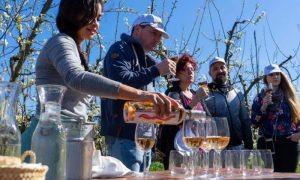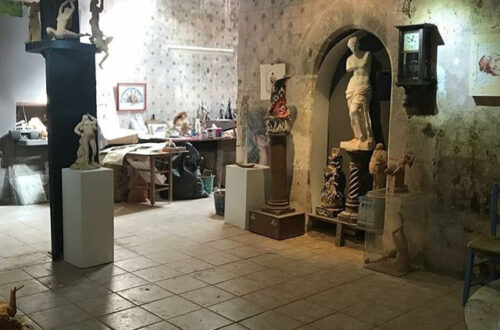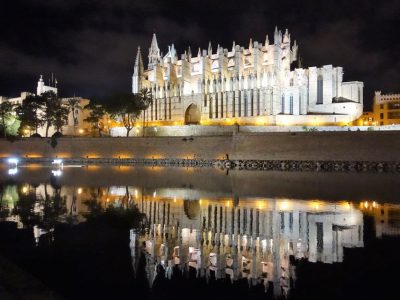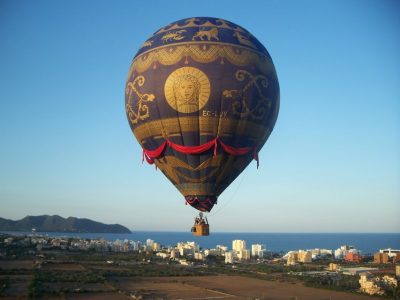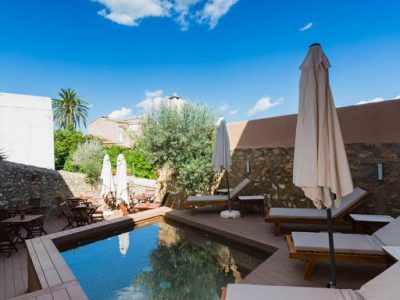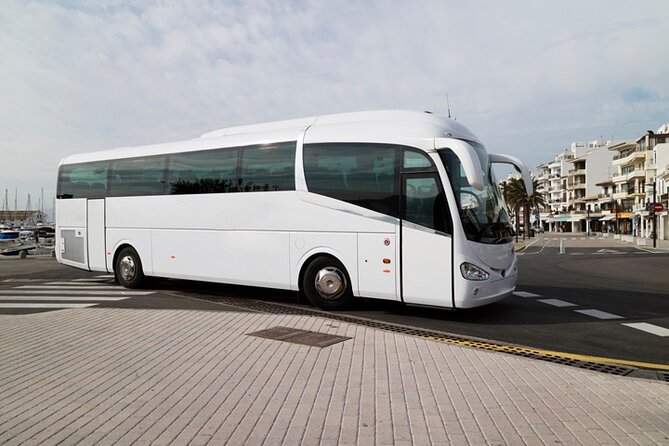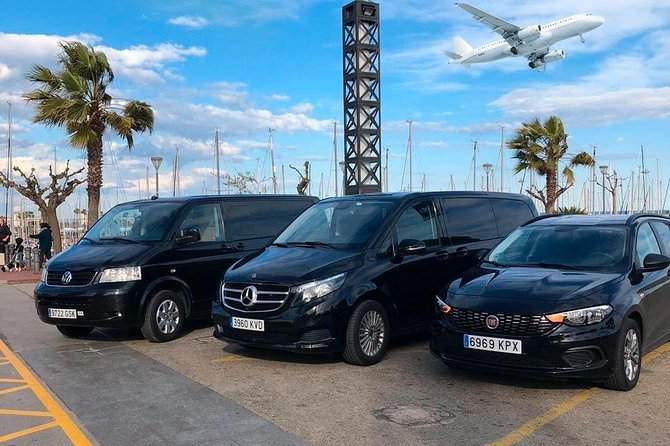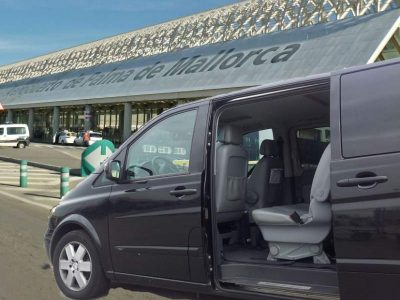All your holiday planning needs in one place, letting you book direct and benefit from official online rates
- Places To Go
- Things To Do
What’s Your Interest?
Traveling with kids
- Blog
Sineu, Mallorca, Things to do and see, hotels, market
Sineu is located right in the heart of Mallorca, ideal for those of you who travel around Mallorca and / or are looking for a central location for cycling and excursion destinations.
Sineu has largely retained its natural inherited charm and is therefore a mecca of traditional Mallorcan culture, gastronomy and history. In other words, you are not only in the center of Mallorca, but also in the center of Mallorca’s history.
Sineu is perhaps mostly renown and beloved for its weekly market on Wednesdays that attracts several hundred thousands people every week.
- This is where I want to go!

Why visit Sineu
Is Sineu worth visiting?
Sineu is home to one of the biggest and most vibrant street markets in Mallorca, which alone makes to medieval town worth visiting. Moreover, you’ll find a wealth of traditional cellers in Sineu, for a taste of the Mallorcan soul.
Things to do in Sineu
VISIT THE PARISH CHURCH OF SANTA MARIA DE SINEU
The imposing parish church of Santa Maria is one of the biggest churches in Mallorca, if not the biggest. It is a spectacular sight with its beautiful detailed Gothic architecture, its 7-storey high bell tower and the captivating collections of artworks inside.
MONUMENT OF THE SANT MARC LION
Patron saint of Sineu, Sant Marc (Saint Marcus), is honored with this beautiful monument standing in front of the massive parish church. Sant Marc was already a patron saint of Sineu in the 14th century after King Jaume II devoted a chapel in the Bellver castle to this saint. The little square in which the lion stands, has for centuries been used as a place of veneration where peasants would come to pray for rain and good harvests.
MONESTIR CONCEPTIONISTA
This is the old royal palace of Sineu that was built by King Jaume II in 1309 as a secondary residence, and later a place for the political superior to reside in his post and function as a judge of the rural Mallorca. During the Middle Ages, King Philip II granted the Conceptionist nuns permission to move in and start a community here. Inside this walled enclosure you can see the beautiful idyllic courtyard garden and the many interesting rooms full of history.
MONASTERY OF MINIMS / TOWN HALL
The former monastery of the Minims of Sineu is today the transformed into town hall. Inside, you can discover the tranquil courtyard featuring many stunning details, and inside the buildings you can find a series of interesting collectables such as an old grain weight from the 13th century.
CHAPEL OF SANT JOSE / MEDIEVAL HOSPITAL
This beautiful Gothic temple was the first ever documented hospital in the rural Mallorca, dating all the way back from the 13th century after the Catalan conquest. In the 14th century, it was transformed to a meeting place for counselors. In the beginning of the 20th century a secondary building was added to the property housing a hospice. The medieval hospital building is a very interesting point of interest in Sineu featuring many stunning details.
CAN GILI
This house used to belong to Joan Gili, an official of the La Germania revolution, who was executed in the Bellver castle in 1522. Today, Can Gili is owned by artist Ricardo “Gago” Aparicio, who exhibits many of his interesting artworks here. This is an interesting visit every lover of art should not miss.
MILL OF D’EN PAU
On the way in/out of Sineu, you find the old windmill of d’En Pau dating all the way back from the 18th century. The mill was closed in 1930 and restored in 1992, and now serves as a splendid restaurant. The round tower rises from a rectangular base which used to be the home of the miller, if you sit inside you will get a true authentic feeling. Outside, there is a beautiful garden of various species and a great collection of cactus. Moreover, the garden features an aviary full of Mediterranean birds. The house parrot is usually outside accompanying those sitting close to the bar.
THE OLD TRAIN STATION
When the Palma-Inca-Sineu railway connection was inaugurated in 1878, this station building was built. The railway connection expanded to also reach Manacor and the building was renovated and finished in 1926. The line to Manacor closed in 1976, and since 1988 the building has been an art museum and bar.
THE RECTORY & CHURCH MUSEUM
The rectory is found on the Placa de Sant Marc on the lateral side of the parish church. Inside, there is a small museum with more than 80 pieces of ceramics dating back from the Muslim times, Middle Ages and Renaissance.
FAQ
Sineu is famous for its weekly market held on Wednesdays. The market attracts hundreds of thousands of people from near and far every week.
If you want to spend a day at some of the best beaches of Europe, you can drive to Platja de Muro or Port d’Alcúdia on the norther cape of Mallorca. The drive from Sineu takes about 20 minutes by car.
Sineu Market
Weekly market
The weekly market in Sineu is held on Wednesdays in central square and the surrounding streets. The Sineu market is a great tourist attraction and has been so for years. Coaches, cars, cyclists and walkers arrive from every side of the town to attend this incredible market, and the streets fill up with thousands of people. The sineu market is a great opportunity to find unique items and do a good bargain on things you already know you want to bring home such as leather products, oils, almonds, clothes, accessories, pearls etc. While at the market, don’t miss out on the opportunity to try one of the great restaurants and cellers of Sineu.
Annual events and happenings
January
Sant Antoni
Sant Antoni (Saint Anthony) is protector of animals and very closely related to the rural parts of Mallorca. On the evening of January 17, come and indulge in a range of Mallorcan traditions such as demons dancing around bonfires, music, typical foods and much more. Also, people bringing their pets to the church during the day to receive blessings is quite a sight.
May
Sa Fira
The annual spring fair, in local mouths simply “Sa Fira”, is the most traditional and popular in all of Mallorca. It was established already back in 1318 by King Sanç, and every year it seems to exceed itself in terms of visitors.At the spring fair, you can look forward to an extended market, traditional muc and dance performances, games, sports and exhibitions all related to the agrarian lifestyle. The spring fair in Sineu is held on the first Sunday of May.
August
Festes de la Mare de Déu d’Agost
Sineu welcomes summer during the first two weeks of August with a series of fun and interesting activities to enjoy. During these two weeks, you can experience games, food stands, markets, performances, parades, sports competitions, exhibitions and much more.
November
Contrallum
You know those pictures of little Spanish squares and narrow streets only lit a few lamps and the moonlight? Well, in Sineu they have made that into a cultural event that stimulates most of your senses. For a few hours, all regular lights are turned off in the streets and only candles, lanterns, the stars and moon will illuminate the historical house facades and the irregular narrow streets between them. You follow a planned out route of about 10 stations through the historical town center, each has its own feature and story to tell you explained by the lights. The is a truly magnificent experience you should really attend.
December
Fira de Sant Tomàs
On the second Sunday of December, Sineu celebrates the traditions of the pig slaughters (matances) with a fair dedicated to meats. At the fair, you can enbjoy various exhibitions of animals and tools, purchase products at the market, learn about the making of traditional Mallorcan sobrassada and botifarron sausages, participate in workshops and much more related to this subject.
Nadal Fet-a-mà
The annual Christamas market is a tradition in almost any Mallorcan town, and so it is in Sineu. However, here they have decided to make it more of a recycle and upcycle market rather than just a traditional Christmas market. Of course, there are plenty of typical Christmas market activities and things, but the focus has for years been on the reuse of the items sold.
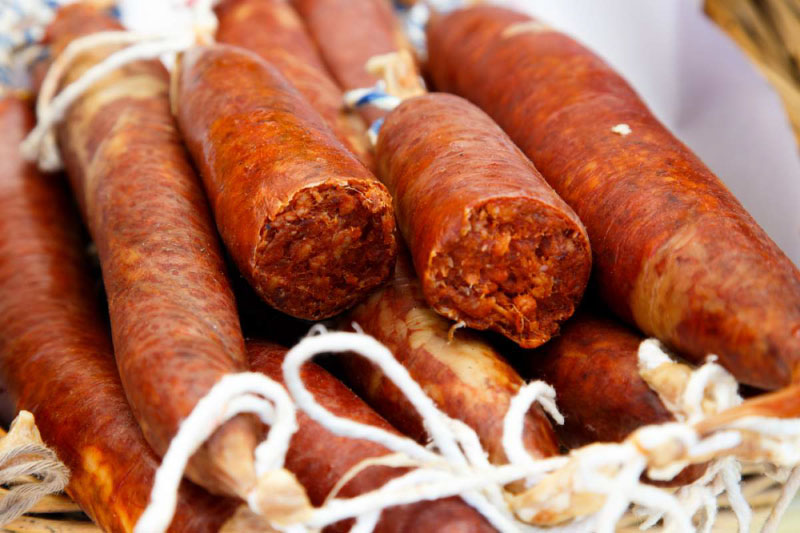
Support Local
Supporting local communities during your travels can have a profound impact. Stock up with groceries locally, stop in an artisan shop or enjoy a refreshment at a restaurant or bar. Now more than ever, these small businesses need support from travelers near and far.
Get to know the area and history of Sineu
About the area of Sineu
Sineu is a municipality located in the very heart of Mallorca. The municipality comprises a territory of 4,769 hectares and 3,764 inhabitants (2018), and borders the municipalities of Llubí, Maria de la Salut, Ariany, Petra, Sant Joan, Lloret de Vistalegre, Costitx and Inca.
Typical products
- Wheat
- Almonds
- Figs
- Stones
History of Sineu
The area of Sineu has been occupied by humans for more than 4,000 years. Discoveries of caves such as Conills, Son Costa, Son Mas, Comellar Fondo de Son Rossi-nyol and Pou d’En Banys, are some of the most remarkable evidences of Pre-Talayotic activity dating from around 2,400 BC.
From the Talayotic period (1,100 – 300 BC), the talayotic constructions of Creixell, Sa Ritxola, Son Rossinyol, Son Ven-rell, Son Alcaines, Puig de Sa Creu and the necropolis of Serral des Moro (Son Estela) stand out as the best examples of settlements from this time.
From the Islamic time, the area was part of a bigger district known as “Yiynau-Bitra” which also comprised the current municipalities of Petra, Ariany, Lloret de Vistalegre, Sant Joan and Vilafranca de Bonany. The Berber Moors lived in farms and little country houses mostly scattered all over the Yiynau-Bitra district, which at the time of the Catalan conquest in 1229/32 counted for 82. The biggest farm with lands was the one of Alhoffra al-Djawfiya, while the most interesting and significant for the Moorish period was the one of Adefla Exarquia, today referred to as “Delfa”. Unlike many other Moorish settlements on the island, there was actually a small urban nucleus of houses or huts where the current town of Sineu is found today, as well as a necropolis, baths a mosque and an alcàsser (Arabian medieval palace) which belonged to the Emir, Mubashshir Nasir Al-Dawla.
Post the Catalan conquest of Mallorca (1229-1232), the king distributed the lands of Mallorca between lords, knights, counts and bishops who either participated or supported the conquest, however, this area corresponded to the king himself. Sineu was conquered in the period between 1229 and 1230, without much resistance from the Moors. In the book called “Llibre de Repartiment” (Book of Distribution), all areas of Mallorca was carefully described and renamed according to the Catalan language. In 1237, this place was referred to as “Sixneu”.
The new Christian settlers soon destroyed the Moorish mosque and replaced it with the first parish church of Santa Maria de Sineu. At this time, the parish also included Sant Joan and Llorit, later Lloret de Vistalegre, which segregated in 1295 and 1298 respectively. The parish church was founded in 1236 by Ferrer de Pallerè, Archdeacon of Tarragona, and mentioned in the papal bulletin of Pope Innocenci IV in 1248.
In the beginning of the 14th century, the road between Palma and Sineu is mentioned as the most important connection in Mallorca for multiple reasons. In 1309, King Jaume II of Mallorca had the royal palace constructed on top of the former Arab palace, a place the king often spent time. From this time, the king also created a set of ordinances in order to establish and define the villages of Mallorca, which basically meant that any nucleus with at least 100 inhabitants or houses would be given the right to have a trade market, Sineu was one of these. In 1319, King Sanç appointed the first “Veguer de Forà”, a criminal judge and royal representative of the rural areas (the Part Forana). This person usually resided in the royal palace, as well as held meetings with the Great and General Council and the Sindicat de Forà which represented the areas of Part Forana.
Sineu also had 2-3 counselors in the Great and General Council, which was the highest political authority as the kingdom did not yet have any courts. The Great and General Council was founded in 1249 and came of the Catalan municipal councils, but was abolished in 1718 due to the governmental changes of Philip V.
However, the political references were not the only thing that made Sineu an important area in the 14th century, also the extensive production of wheat stood out from other areas of the island. At the town hall, you can see the old bronze tapered “barcella de Sineu”, a container and measurement tool used for weighing cereals and grains which dates back from the 13th century.
In 1318, King Sanç established the traditional spring fair in Sineu, the oldest of its kind in Mallorca.
In 1521, a twin society came to arise in Mallorca known as “La Germania”, a movement adopted from Valencia. La Germania was essentially a continuation of a conflict between the nobility and peasants back from the middle of the 15th century known as “Revolta Forana”, which came from corruption scandals that allowed the nobility to have paper on most lands of Mallorca leaving the small peasants and landowners with almost nothing and no influence, which basically meant that the nobility could charge massive rents and tax loads. The Germania started diplomatically trying a political approach, but soon turned to violence occupying Palma and started murdering high standing people. The governor of Mallorca, Miguel de Gurrea, fled to Ibiza while the remaining part of the nobility that fled from Palma took shelter within the walls of Alcúdia, the only town that remained faithful to the monarch and which the Germania could never take. Sineu, however, was taken under control of La Germania in the years between 1521 and 1522 and many people from Sineu participated in the revolt. In the late 1522, the king sent his royal troops to Alcúdia to put a stop to La Germania, which ended with a surrender in 1523 in Palma. The surrender to the king’s troops meant execution of more than 100 men from Sineu, including the notary Joan Gili, of Can Gili, who acted as spokesman for the La Germania whom was executed in Castell de Bellver. The consequences of the war was a great recession leaving Sineu with high fines and increased taxes.
In 1583, the former royal palace of Sineu was converted into a convent on concession of King Philip II.
In the middle of the 17th century, the bubonic plague was at its highest causing hundreds of deaths in Sineu. The inn of Son Joan Arnau was used as a quarantine site, and the farm and lands of Binitaref was converted into a hospital and cemetery.
The beginning of the 18th century brought a new municipal system to Sineu as a consequence of the War of the Spanish Succession. The Great and General Council disappeared and a town hall made up of a mayor and four counselors was instituted.
The Peninsula War (1807-1814), which led to the Constitution of Càdiz in 1812, left Spain in a chaotic condition with economic stagnation, political instability and social turbulence. Even though Sineu did not take part in the war, the consequences were felt with extra taxes and donations to help reestablish Spain.
During the Liberal Triennium between 1820 and 1823, a confiscation of all religious monastics with less than 12 nuns or monks was a reality. The convent of Minims in Sineu was one of those affected. The Minims did return, but only for a short time because in 1833 the First Carlist War broke out in Spain and prime minister, Juan Álvarez Mendizábal, confiscated all monastic properties and auctioned them to private investors in order to raise money to support Queen Isabel II. In 1877, the town hall of Sineu purchased the convent.
From the beginning of the 20th century, Sineu saw an increase in extraction of raw materials due to the opening of several mines and stone quarries which enhanced the economy remarkably. Today, the economy is still mainly centered around agricultural activities such as wheat, cereals, livestock, almonds etc., all products of the dry plain lands of the Pla region.
The origin of the name is quite uncertain, as numerous theories by several etymologists has been suggested. The name of the area first appeared in the 13th century after the Catalan conquest of Mallorca where four different spellings of the name was seen; Sixneu, Xisneu, Sisneu, and Xineu. With this many different spellings it has been difficult to figure out exactly from where the Catalan conquerors got the name. The first commonly believed theory was one that suggested that the place name derived from the Latin “Gium” as in Cinium, which could have been the name of a Roman village. This theory was, however, later discarded as the Arabist, Miquel Barceló, tried to interpret the place name of “Yiynau”, part of the district name from the Moorish period called “Yiynau-Bitra”. His theory was that this name could derive from the Arab word “J.jnu”, which again could come from the Berber word “Ignawen” meaning “Mule”. The word “Yiynau” or “Jijnau” is found several times in places around the area which supports the theory that this is the word that was translated to the Catalan “Xisneu” or “Sixneu”.
Practical Info
Useful Numbers
Emergency: 112
National police: 091
Local police: 092
Guarda civil: 062
Fire: 080
Maritime emergencies: 900 202 202
Town Hall: +34 971 520 027
Public Transport
Bus lines: 402, 441, 442
Power Supply
220V


